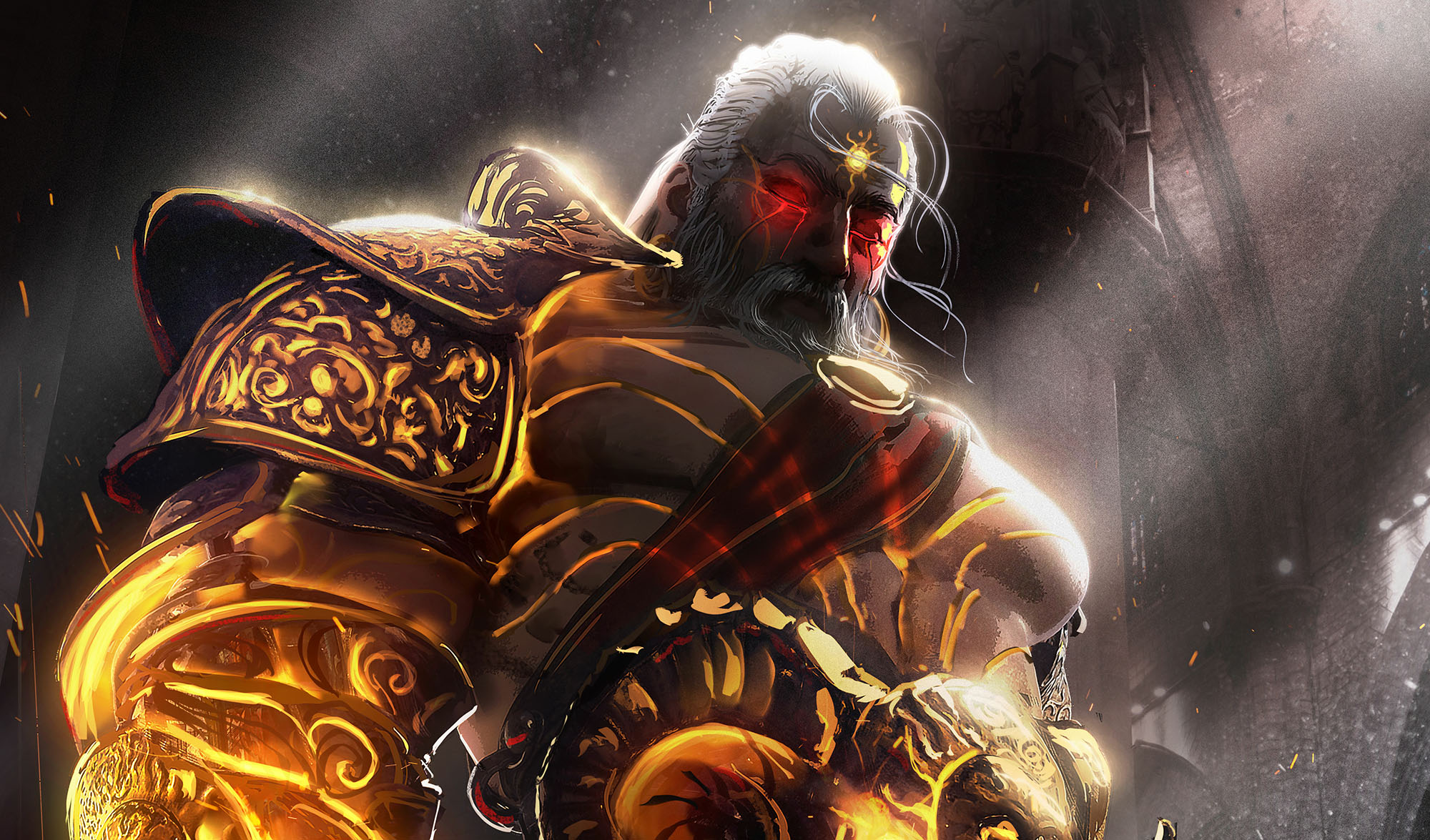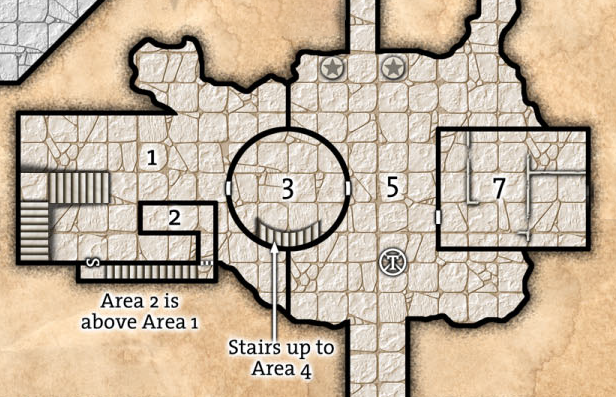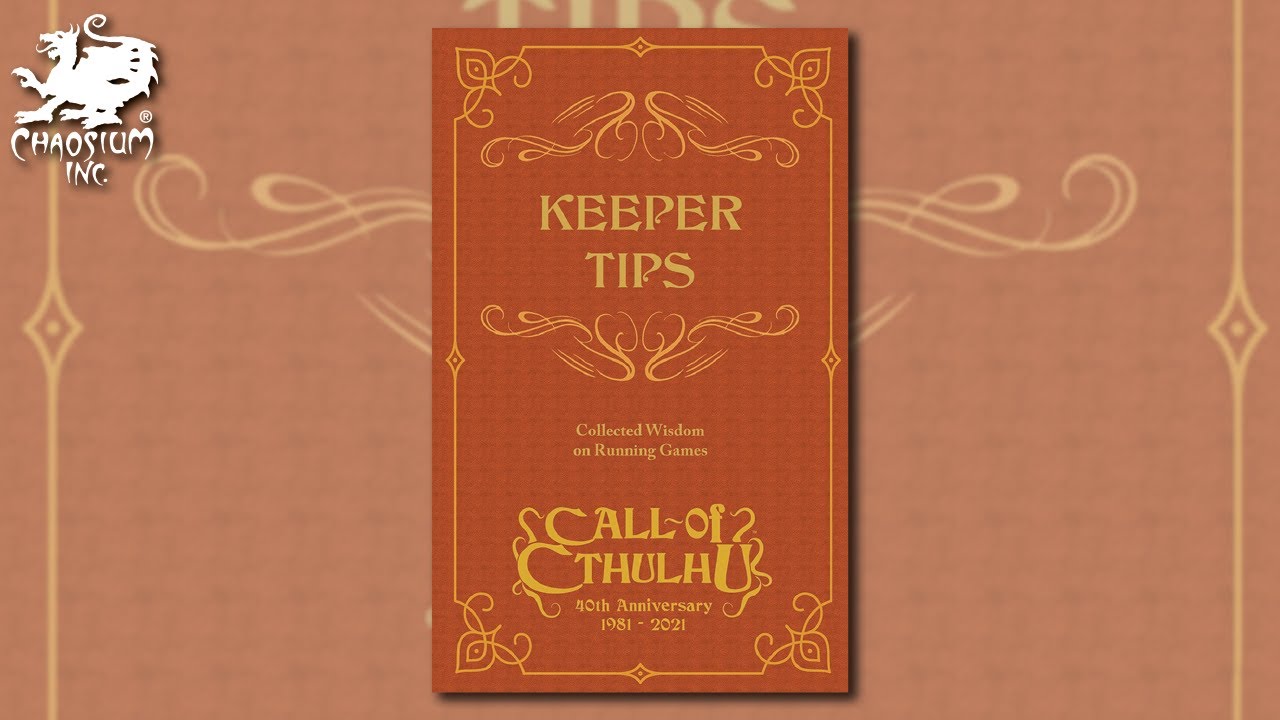I can’t do a murder mystery because the PCs will just cast zone of truth!
Awhile back I shared Random GM Tip: Speak With Dead Mysteries, which looks at the particular challenges of designing a murder mystery scenario when the PCs have access to the speak with dead spell (or some similar magical or technological effect). A common follow-up question from people reading this article is, “But what about zone of truth?”
As I mentioned in the original article, you have to start by embracing the fundamental dynamic of a mystery: It’s not to withhold information from the detective(s); it’s about the detective(s) acquiring information.
Insofar as the zone of truth serves as one method that the PCs can use to acquire information, therefore, it won’t be a problem. It will only become a problem if (a) it trivializes all other methods of acquiring information and/or (b) short circuits a specific investigation.
Keeping that in mind, let’s take a closer look.
WHICH ZONE OF TRUTH?
There can be considerable differences in how zone of truth and similar effects work, and this will obviously have an impact on how it affects investigations.
First: Do spellcasters know when the targets of their spells — particularly enchantment spells — make their saving throws?
Personally, I prefer No. (And will often apply this as a house rule even in systems where the answer would be Yes under the rules-as-written or rules-as-intended.) I think pretending to go along with a caster’s domination spell, for example, is a classic genre trope.
This is how zone of truth worked in D&D 2nd Edition and 3rd Edition, and it obviously adds a layer of ambiguity to the spell. (If two people contradict each other, is that just a difference of opinion/belief? Or did one of them make their saving throw? Or both of them?) D&D 5th Edition, on the other hand, adds specific language allowing the caster to know when the spell is in effect, stripping ambiguity.
Second: How often can a character resist the effects of the zone of truth? Do they make a single saving throw when entering the zone? Make a new saving throw every round? Make a saving throw each time they need to make a declarative statement or answer an explicit question?
Once again, D&D 5th Edition’s version of the effect is the most troublesome for mysteries.
Third: Does the target know they’re in a zone of truth before they speak? If so, it allows them to account for the zone in what they say and how they choose to answer questions.
This has been true for every version of the D&D spell. Wonder Woman’s golden lasso, on the other hand, is usually depicted as surprising those bound by it.
Fourth: Does the effect compel the target to answer direct questions? This would obviously also make the spell a much more powerful tool in the detective’s arsenal, but it’s also not how the D&D spell works.
IDENTIFY THE QUESTION
To paraphrase something Margaret Frazer’s Dame Frevisse once said, the secret to solving a mystery is less about the answers you get to your questions than it is knowing what questions to ask and who to ask them of in the first place.
Often when talking about zone of truth mysteries in a hypothetical sense rather than a practical one, it seems people often default to thinking about an Agatha Christie-style murder mystery where there are eight specific suspects isolated on a country estate. In this scenario, with access to a zone of truth, it’s quite easy to identify both the question (Did you kill Bob?) and who you need to ask (the eight suspects).
But this type of scenario isn’t really common in RPGs to begin with: The plotting of these stories depends on the author having tight control over which questions are asked and when they’re asked in order to create a clever logic puzzle, the solution of which can only occur to the detective at the moment of the author’s choosing. Even if you want to prep a plot in an RPG — and you shouldn’t — it’s still basically impossible to force this kind of sequencing at the table.
As a result, RPG mystery scenarios tend to be built around other structures. For example, it’s not unusual for a mystery scenario to begin at a crime scene filled with physical evidence — e.g., the bloody carnage of a worg attack or the pale gray corpse of a vampire killing — and nary a suspect in sight. Before the PCs can start asking questions, they’ll first need to figure out — as Dame Frevisse said — what the questions are.
To put it another way: Zone of truth can’t short circuit the investigation if the investigation is about figuring who you need to question in the first place.
Next time you’re reading a well-made RPG mystery scenario — like Eternal Lies or Quantronic Heat — take note of how rarely NPCs actually lie to the PCs. Even NPCs who are just withholding information aren’t terribly common. In other words, even without a zone of truth, it’s not unusual for every NPC in these scenarios to say nothing but true things, and the scenario still works just fine.
There is one exploit, however, that clever players can use a zone of truth to unlock:
Can you think of anything that would help our investigation if we knew about it?
Given any kind of limited suspect pool, this question can be used as a quick shortcut for identifying the question(s) they need to ask to solve the mystery, so if you don’t want to get caught flat-footed at the table, it can be useful to prep the clever answer your bad guy(s) will use to evade it.
A good, one-size-fits-all solution here is the incomplete answer: They have to speak the truth, so they do, in fact, have to give the PCs something helpful. But it doesn’t have to be everything that they know would be helpful, nor does it need to be the most helpful thing. Stuff that wastes a ton of time while, technically, being useful is a great fit here.
Can you think of anything else that would be helpful?
Clever player.
The NPC can’t say, “No,” of course, but deflecting back to the first answer is usually possible.
Player: Can you think of anything that would help our investigation if we knew about it?
Bad Guy: I’d check the security cameras.
Player: Can you think of anything else that would be helpful?
Bad Guy: Hmm… I really think the security cameras are what you should check next.
GAIN ACCESS
The other crucial thing about deploying a zone of truth is that you need to (a) get the suspect in the zone and (b) get them to answer your questions.
Returning to our Christie-style manor mystery, if seven of the suspects all readily hop into your zone of truth and the eighth suspect refuses, then the jig is probably up. To avoid this problem, you need to have multiple suspects refuse. The PCs may still be able to use the spell (or the threat of the spell) to narrow the scope of their investigation, but not close it.
The reason for refusal might be specific to each character. The most likely explanation would be some dark secret unrelated (or at least not directly related) to the crime that they nevertheless do not want discovered.
Alternatively, it might be a society-wide condition that can be broadly applied. For example, it might be a cultural more that casting an enchantment spell on someone is unacceptably rude or unethical, such that even suggesting it will likely provoke an outraged response. It could even be a matter of explicit law, with the use of such spells being tightly regulated, limited, and controlled.
This touches on another issue, which is whether or not the PCs have the authority to question people. If they’re police detectives, then it will give them an advantage. (Although they’ll also probably have to abide more closely to the aforementioned laws, in which case they may need to do a bunch of legwork before they can deploy their spell.) If they’re just a bunch of random bozos who have wandered into town, it may be a lot easier for the suspect to dodge their calls.
Which leads us to another obstacle to gaining access, which is just literally finding them. Sure, you want to question Bob. But the door to his apartment has been kicked in, the place has been ransacked, and he’s either been kidnapped or is in the wind. In other words, the mystery — or a significant part of the mystery — can just literally be trying to track down the person you want to use your zone of truth spell on.
Of course, in order to find the person you want to question, you first have to identify them. The manor mystery, of course, still assumes that the list of suspects is immediately obvious, but in a lot of mysteries it’s anything but.
For example, you’ve found Bob: He’s been brutally murdered and his corpse dumped in an alley. You can’t question every single person in the city, so you’re going to have to figure out how to narrow down your suspect list first.
Even once you’ve gotten a suspect into the zone of truth, though, access can continue to be a problem if you enforce the time limit. The D&D 5th Edition spell, for example, only lasts for ten minutes. That time can vanish surprisingly quickly, so set a timer.
This can be even more of a limitation in a manor house mystery: How many suspects can you rush through the circle before you run out of spells for the day?
If the PCs are trying to rush bunches of NPCs through their zones and you don’t want to play through every encounter, might rule that each witness requires 2d6 minutes or questioning; or perhaps 1d4+1 minutes if the PCs take disadvantage on their interrogation checks.
DESIGN THE CRIME
Imagine that it’s 1850 and you’re anachronistically GMing a roleplaying game. The science fiction game you’re running describes strange devices known as “security cameras” which record everything that takes place in a room.
“How am I supposed to design a mystery scenario when there are security cameras everywhere?!” you cry. “They can just see who did the crime!”
Modern criminals, of course, simply know that security cameras exist and they plan their crimes accordingly. In many cases, the evidence they leave behind while countering the security cameras will be the very clues detectives use to track them down!
An easy solution, of course, is to say something like, “I drank a potion of anti-enchantment that lasts for forty-eight hours,” thus negating the zone of truth entirely. (A clever criminal, of course, will make sure they have some perfectly reasonable pretext for having done so. An even cleverer criminal will have slipped it into the drinks last night and everyone at the manor house has immunity.)
This sort of stonewalling — where the PCs’ abilities are simply negated — is mostly just frustrating, however. It’s usually more fun to find ways that don’t just completely shut off the spell.
To put our suspect at their maximum disadvantage, let’s once again return to the manor house scenario that takes so many other options (access, identifications, etc.) off the table. This, however, is precisely the situation in which the murderer would anticipate a zone of truth. So how would they plan for that?
- They would anticipate the question, “Did you kill so-and-so?” and therefore have planned their crime so that they can honestly say, “No,” (e.g., they tricked them into suicide, arranged for a convenient accident, or hired someone else to kill them).
- They sent a dominated doppelganger disguised as themselves to enter the zone of truth. If the doppelganger’s identity is discovered, the PCs will find the NPC “knocked out” and tied up in their room. Who did this to them?! The mystery deepens. (Meanwhile, the zone of truth has expired.)
- They covertly trigger a dispel magic effect that destroys the zone of truth, possibly while someone else is being questioned. How many of those spells can you cast today, exactly?
- They arrange for a distraction. “Can you confirm that your name is Miguel Cavaste?” “Yes.” “Can you—” EXPLOSION. By the time of the chaos of the explosion is dealt with, the zone of truth has once again expired.
And so forth.
CONVERSATIONAL GAMBITS
Taking all of the above into consideration, there will nonetheless come the time when the suspect is in the zone of truth and faced with the PCs’ questions.
Maybe that’s all she wrote: Either they confess dramatically, surrender meekly, or initiate the final action scene by attacking the PCs, summoning reinforcements, or attempting to flee.
On the other hand, maybe not.
Instead, the zone of truth questioning can become a cat-and-mouse game: a final riddle for the players to unravel.
Let’s take a look at the conversational gambits an NPC (or PC!) might use when trapped, literally or metaphorically, in a zone of truth.
We’ve already mentioned giving incomplete answers. Just because you have to say true things, doesn’t mean you need to say EVERY true thing you know. Questions like, “Did you see anything suspicious last night?” gives the suspect a huge latitude in directing the interrogators’ attention towards any number of useful distractions.
They can also answer a question with a question. A question, technically, cannot be a lie. So if they can slip this past the interrogators, it can often create the illusion of a false answer: “Do you think Robert could have done this?” or “I had drinks with Marcia last night… what time was it? Around six?”
Another option is to simply refuse to answer. This, of course, looks suspicious. However, we’ve previously talked about cultural mores (“I plead the fifth!”) and simply feigning outrage (“How dare you ask me that?!”) can deflect or, at the very least, buy time.
On that note, simply rambling, delaying, feigning confusion, or otherwise running out the clock is also a perfectly viable strategy when you know the zone of truth has an unforgiving time limit.
SOLUTION IS A KEY, NOT A CONCLUSION
If you think in terms of node-based scenario design, the goal of any interrogation is to gain a lead that will point you to another node where you can continue your investigation.
As long as this remains true, the zone of truth only provides a key that you wanted the PCs to get in the first place. And therefore, of course, the zone of truth isn’t a problem at all.
So this can also bring us back to some basic first principles in RPG scenario design: Don’t prep the specific things that the PCs will do. Instead, prep a robust, dynamic situation for the PCs to interact with.
If you try to prep a specific thing for the PCs to do, the zone of truth can thwart you by giving them an alternative method of achieving their goal. But if you’ve prepped an interesting situation, then the zone of truth will often just be one more prompt for you to respond to with all the cool toys you’ve made for yourself.
FURTHER READING
Speak with Dead Mysteries
Three Clue Rule

















